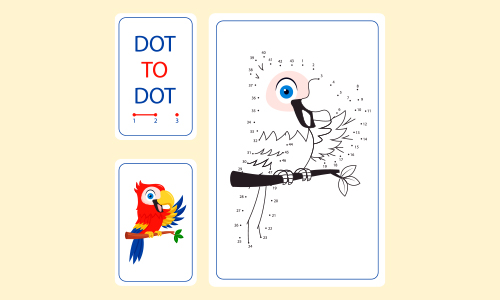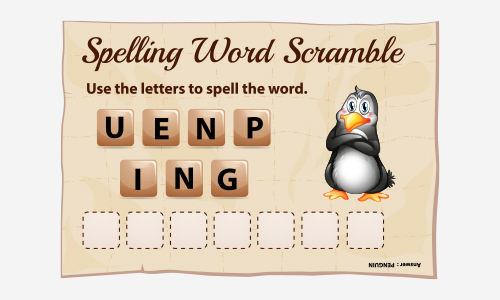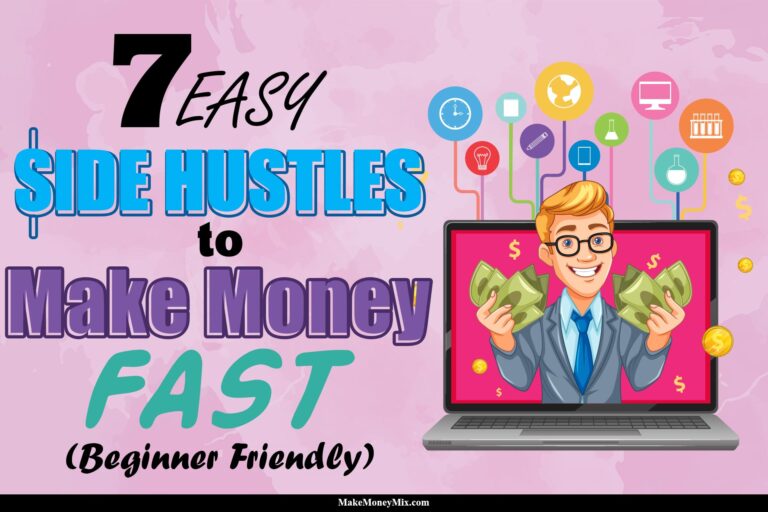6 Best AI Side Hustles to Earn $500+ Per Day (2025)

Are you curious about how artificial intelligence can help you earn money online?
AI tools have revolutionized side hustles, enabling people to generate income with less effort and more creativity.
In this blog post, I’ll explore 6 AI-powered side hustles helping individuals earn up to $500 per day—or even more!
Whether you’re a beginner or an experienced entrepreneur, these ideas will inspire you to start your own AI-driven journey.
Top 6 Ai Side Hustles to Earn $500+ Per Day
Are you ready to make money with AI Side Hustles? These ideas will make you $500 daily. With little to no experience, you can easily build your own online business.
Let’s dive in!
Here’s more: 6 REALISTIC Side Hustles That Make $100+ Per Day (2025)
1. AI-Generated Dot-to-Dot Books
If you’re looking for a creative side hustle that combines fun, automation, and profitability, AI-generated dot-to-dot books are a fantastic option.
These interactive activity books are surprisingly popular on Amazon, especially among kids and parents.
With the help of AI tools, you can create these books with minimal effort and start earning passive income through Amazon KDP (Kindle Direct Publishing).
In this guide, I will walk you through actionable steps, challenges to overcome, and tips for success in creating and selling dot-to-dot books using AI.
Let’s get started!
Why Dot-to-Dot Books Are a Great Side Hustle
Dot-to-dot books are simple yet engaging puzzles where users connect numbered dots to complete an image.
They’re highly sought after for their educational value and entertainment factor. Here’s why they’re worth your time:
- High Demand: These books sell thousands of copies monthly on Amazon. Some top-selling dot-to-dot books earn over $16,000 per month!
- Low Competition: Unlike other book niches like coloring books, dot-to-dot books have fewer competitors.
- Passive Income Potential: Once published on Amazon KDP, your book can generate sales without requiring constant updates or inventory management.
Step-by-Step Guide to Creating Dot-to-Dot Books
Step 1: Choose Your Theme
Start by deciding on a theme for your dot-to-dot book. Popular themes include animals, holidays, nature scenes, or educational topics like alphabets and numbers.
Consider what would appeal to your target audience—kids, parents, or educators.
Pro Tip: Research trending themes on Amazon by browsing the best-sellers in the dot-to-dot category.
Step 2: Generate Line Art Using AI Tools
AI image generators make creating line art images for your puzzles easy. Here’s how:
- Pick an AI Image Generator: Use tools like Midjourney, Stable Diffusion, DALL-E, or Leonardo AI. Midjourney is particularly great for generating high-quality line art.
- Prompt the AI: Ask the AI to generate simple black-and-white line art based on your chosen theme (e.g., “line art of a cute cat” or “simple line art of a Christmas tree”).
- Select Your Image: Choose an image that is clear and easy to convert into a dot-to-dot puzzle.
Step 3: Edit Your Image
Once you have your line art image, you’ll need to modify it to create the dot-to-dot puzzle:
- Use Free Editing Tools: Open the image in Photopea (a free online editor) or any other editing software you prefer.
- Erase Lines: Use the eraser tool to remove parts of the image that will be replaced with numbered dots. Save this edited version as a new file.
Challenge Alert: Ensure the erased sections don’t compromise the overall shape of the image.
Users should still be able to recognize what they’re connecting with!
Step 4: Add Dots and Numbers in Canva
Canva is a user-friendly design tool that makes it easy to finalize your puzzle pages:
- Upload Images: Import the original unedited image and edited version into Canva.
- Lower Transparency: Make the original image semi-transparent to align dots over-erased sections accurately.
- Add Dots: Use Canva’s Shapes tool to place circles where lines were removed in the edited version.
- Number Each Dot: Add numbered text boxes next to each circle using Canva’s Text tool.
- Delete Original Image: Remove the semi-transparent layer so only your dot-to-dot puzzle remains visible.
Repeat this process for multiple pages until you have enough puzzles for a complete book (typically 20–50).
Step 5: Compile and Publish Your Book
Once your puzzles are ready, compile them into a PDF file for publishing:
- Organize Pages: Arrange your puzzles neatly in Canva or any PDF editor.
- Upload to Amazon KDP: Sign up for Amazon KDP (free!) and upload your PDF file with a catchy title, description, and cover design.
- Set Pricing: Choose a competitive price that balances affordability with profitability.
Amazon will handle printing and shipping on demand whenever someone purchases your book.
Challenges You Might Face (And How to Overcome Them)
Challenge 1: Creating High-Quality Puzzles
Poorly designed puzzles can frustrate users or make your book look unprofessional.
Solution: Test each puzzle yourself or ask friends/family to try them before publishing.
Challenge 2: Standing Out Among Competitors
The market may not be saturated, but competition still exists.
Solution: Focus on niche themes (e.g., “Ocean Animals Dot-to-Dot”) or combine puzzles with additional activities like coloring pages.
Challenge 3: Marketing Your Book
Without proper marketing, even great books can go unnoticed.
Solution: Promote your book through social media platforms like Instagram or Pinterest, where parents and educators hang out.
Tips for Success
- Design an Eye-Catching Cover: The cover often convinces customers to click on your book listing. Use vibrant colors and clear imagery that reflects your theme.
- Write a Compelling Description: Highlight what makes your book unique—mention its educational benefits or fun themes.
- Offer Bundles: If you create multiple dot-to-dot books, sell them as bundles for added value.
- Leverage Reviews: Encourage early buyers to leave positive reviews; these significantly impact sales on Amazon.
Why You Should Start Today
Dot-to-dot books are more than just fun. They’re profitable, too!
With AI tools simplifying the creation process and Amazon KDP providing free publishing services, this side hustle has little barrier to entry.
Imagine earning passive income while giving kids around the world hours of entertainment.
Sounds like a win-win situation, doesn’t it?
So why wait?
Pick up those tools today and start creating!
Also Check: 30 Genius Ways to Make $100 Per Day Online Using AI
2. AI-Generated Podcasts
Podcasts are booming, and if you’ve ever thought about starting one but felt overwhelmed by the time, effort, or technical skills required, here’s some good news.
AI tools can now help you create podcasts almost entirely on autopilot.
With the right approach, you can turn this into a lucrative side hustle, earning hundreds of dollars daily through platforms like YouTube.
In this guide, I will explain everything you need to know about launching an AI-generated podcast, from actionable steps to overcoming challenges and tips for success.
Let’s dive in!
Why AI-Generated Podcasts Are a Great Opportunity
Podcasts are one of the most popular forms of content today.
Whether it’s true crime, self-help, or storytelling, people love listening to engaging audio conversations.
Here’s why this side hustle is worth your time:
- High Demand: Podcasts consistently attract millions of listeners worldwide. On YouTube alone, podcast-style videos often rack up tens of thousands of views daily.
- Monetization Opportunities: Through YouTube’s Partner Program, creators earn ad revenue (typically $4–$8 per 1,000 long-form video views). Sponsorship deals and affiliate marketing can also add to your income.
- Minimal Effort with AI: Thanks to tools like Google’s NotebookLM and AI voice generators, you can create podcasts without recording or hiring voice actors.
Step-by-Step Guide to Starting an AI-Generated Podcast
Step 1: Define Your Podcast Niche
The first step is figuring out what your podcast will be about. A niche helps you target a specific audience and stand out in a crowded market.
Some popular niches include:
- True crime stories
- Pop culture discussions
- Self-improvement tips
- History deep dives
- Science or Tech News
Pro Tip: Choose a topic that interests you or aligns with trending searches on platforms like YouTube or Google Trends.
For example, true crime podcasts are evergreen and consistently attract large audiences.
Step 2: Gather Content for Your Podcast
Once you’ve chosen a niche, it’s time to gather content ideas for your episodes. This is where AI tools shine:
- Research Topics: Use ChatGPT or Google Bard to brainstorm episode ideas based on your niche. For example, if your podcast is about true crime, search for lesser-known cases or quirky stories (e.g., “The Lemon Juice Bank Robbery”).
- Upload Documents to NotebookLM: Google’s NotebookLM allows you to upload text documents like articles or Wikipedia pages. It can transform them into conversational scripts. This tool is perfect for generating a natural-sounding dialogue between “hosts.”
Step 3: Use AI Tools to Generate Conversations
Here’s where the magic happens! With NotebookLM (or similar tools), you can turn research into podcast-like conversations:
- Upload your text documents (e.g., articles or case files) into NotebookLM.
- Let the tool generate a chatty script that mimics a conversation between two or more hosts discussing the topic.
- Review and edit the script to ensure it matches the tone and style you want for your podcast.
For example:
- Host 1: “So, have you ever heard about a bank robbery involving lemon juice?”
- Host 2: “Wait… lemon juice? What does that have to do with anything?”
Step 4: Add AI Voices
You don’t need to record your voice if you’re uncomfortable doing so! Use AI voice generators like ElevenLabs or Murf.ai to bring your script to life:
- Choose voices that fit your podcast’s tone (e.g., friendly, professional, dramatic).
- Input your script into the voice generator and let it produce high-quality audio files for each “host.”
- Edit the audio using free software like Audacity if needed (e.g., adding background music).
Step 5: Publish on YouTube
YouTube is one of the best platforms for monetizing podcasts because of its massive audience and built-in ad revenue system:
- Create a simple video format using Canva or stock footage platforms like Pexels or Storyblocks. For example, use animated waveforms or static images related to your topic as the visual component.
- Upload your audio file as the background track for the video.
- Optimize your video title and description with keywords like “true crime podcast” or “AI-generated podcast.” This improves discoverability in search results.
Challenges You Might Face (And How to Overcome Them)
Challenge 1: Making Conversations Sound Natural
AI-generated scripts might sound robotic at times.
Solution: Edit the script manually to add humor, pauses, or casual phrases that make it feel more authentic.
Challenge 2: Building an Audience from Scratch
Starting with zero subscribers can feel daunting.
Solution: Promote your podcast on social media platforms like Instagram and TikTok using short clips from your episodes.
Challenge 3: Monetization Takes Time
YouTube requires at least 1,000 subscribers and 4,000 watch hours before you can join its Partner Program.
Solution: Focus on creating binge-worthy content that keeps viewers engaged so they watch more episodes.
Tips for Success
- Focus on Trending Topics: YouTube’s episodes about current events or viral stories perform better.
- Engage with Your Audience: Reply to comments on your videos and ask viewers what topics they’d like to cover in future episodes.
- Batch Create Content: Use AI tools to generate multiple episodes at once so you can maintain a consistent upload schedule.
- Add Visual Appeal: Even though it’s a podcast, having engaging visuals (like animated text or relevant images) can keep viewers hooked.
Why You Should Start Today
The world of podcasts is evolving rapidly, and AI tools are making it easier than ever to enter this space without expensive equipment or years of experience.
Imagine earning a passive income while sharing fascinating stories and doing that all from the comfort of your home!
So why wait?
Start brainstorming topics today, and let AI help you launch your podcast empire!
Related: 46 Realistic Ways to Make $200 Per Day with ChatGPT
3. AI-Automated Candles
Candles are one of the most popular gift items on Etsy.
You can create and sell AI-generated candles without touching wax or wicks with AI tools and print-on-demand services.
This side hustle is perfect if you’re looking for a creative yet automated way to earn money online.
In this guide, I’ll show you how to start your AI-powered candle business, overcome common challenges, and maximize your profits.
Let’s light up your entrepreneurial journey!
Why Selling AI-Generated Candles Is a Great Side Hustle
Candles are more than just functional; they’re emotional.
People buy candles for their scents, aesthetics, and the messages they convey. Here’s why this side hustle works:
- High Demand: Candles are consistently among the top-selling products on Etsy. Funny or cheeky candles with clever labels are especially popular.
- Low Investment: With print-on-demand services like Printify, you don’t need to invest in inventory or production equipment.
- Automated Process: AI tools simplify label design, while print-on-demand handles production and shipping.
Step-by-Step Guide to Starting Your Candle Business
Step 1: Research Your Target Audience
Before diving into candle creation, understand who you’re selling to. Are your customers:
- Gift shoppers looking for quirky candles?
- People decorating their homes?
- Niche audiences like pet lovers or book enthusiasts?
Pro Tip: Browse Etsy’s best-selling candles to identify trends (e.g., funny slogans, holiday themes).
Step 2: Use AI to Generate Candle Slogans
The magic of your candles lies in their labels. ChatGPT is perfect for generating clever slogans tailored to your audience.
- Provide Examples: Feed ChatGPT examples of successful candle labels (e.g., “Smells Like My Ex’s Apology” or “Burning Calories Not Included”).
- Request Custom Slogans: Ask ChatGPT to generate similar slogans for specific niches (e.g., “For Book Lovers: Smells Like a Plot Twist”).
- Refine Results: Choose the best slogans and tweak them to match your brand voice.
Pro Tip: Focus on humor or relatability. These types of candles sell exceptionally well on Etsy.
Step 3: Design Labels Using Canva
Once you have your slogans, it’s time to design eye-catching labels:
- Sign Up for Canva: Canva is a free graphic design tool that is perfect for beginners.
- Choose a Template: Use Canva’s pre-made label templates as a starting point.
- Add Your Slogans: Incorporate your AI-generated slogans with fun graphics or icons that match the theme (e.g., flames for humor or flowers for elegance).
- Export Your Designs: Save your label designs in high-resolution formats compatible with print-on-demand platforms.
Pro Tip: Keep your designs clean and readable. Customers should instantly understand the message at a glance.
Step 4: Partner with Print-on-Demand Services
Printify is one of the best platforms for creating custom candles without handling production yourself:
- Sign Up for Printify: Create a free account on Printify and explore their catalog of blank candles from reputable suppliers like Printed Mint.
- Upload Your Designs: Add your Canva-created labels to the blank candle templates provided by Printify.
- Set Pricing: Determine a markup price that covers production costs while leaving room for profit (e.g., $18–$25 per candle).
- Sync with Etsy: Integrate Printify with your Etsy store so orders are automatically fulfilled when customers purchase.
Step 5: Open Your Etsy Store
Etsy is the go-to marketplace for handmade and unique products like candles:
- Create an Account: Sign up for Etsy and set up your store with a catchy name that reflects your brand (e.g., “Witty Wick Co.”).
- Write Product Listings: Include engaging descriptions highlighting why your candles are unique (e.g., “Perfect gift for coffee lovers—Smells like freshly brewed joy!”).
- Optimize SEO: Use keywords like “funny candles,” “gift candles,” or “custom candle gifts” in your titles and tags to improve visibility in search results.
Challenges You Might Face (And How to Overcome Them)
Challenge 1: Standing Out in a Crowded Market
The candle market is competitive, especially on Etsy.
Solution: Focus on niche audiences or themes (e.g., pet lovers, fandoms) and create unique designs that resonate with them.
Challenge 2: Shipping Costs Eating into Profits
Shipping can be expensive, especially for heavier items like candles.
Solution: Offer free shipping on orders above a certain amount ($50+) or negotiate shipping rates with Printify.
Challenge 3: Maintaining Quality Control
You won’t physically handle the candles, so ensuring quality can be tricky.
Solution: Order samples from Printify before listing products to check quality firsthand.
Tips for Success
- Leverage Social Media Marketing: Share photos of your candles on Instagram, TikTok, and Pinterest to attract potential buyers.
- Offer Seasonal Themes: Create limited-edition designs for holidays like Christmas, Halloween, or Valentine’s Day.
- Bundle Products: Sell candle bundles at discounted rates to increase average order value.
- Encourage Reviews: Positive reviews boost credibility—offer discounts or freebies in exchange for honest feedback.
Why You Should Start Today
Imagine earning passive income while creating products people love gifting and displaying in their homes.
All without needing upfront inventory or production expertise!
With AI tools handling creativity and print-on-demand services managing logistics, this side hustle is fun and profitable.
So, what are you waiting for?
Start brainstorming witty slogans today and turn your ideas into glowing success!
Also Check: 6 REALISTIC Side Hustles That Make $100+ Per Day (2025)
4. Niche Word Search Books
Word search books are a timeless form of entertainment and education.
From kids learning new words to adults enjoying a relaxing puzzle, these books are loved by all age groups.
Now, with AI tools like ChatGPT and Canva, you can easily create niche word search books and sell them on Amazon KDP for passive income.
In this detailed guide, I’ll show you how to create your own word search books, overcome potential challenges, and maximize your earnings. Let’s dive in!
Why Niche Word Search Books Are a Great Side Hustle
Word search books are highly profitable because they appeal to a wide audience and can be customized for specific niches.
Here’s why this side hustle is worth exploring:
- High Demand: Word search puzzles are popular among kids, adults, and seniors. Niche word search books (e.g., educational themes or hobbies) stand out and attract targeted buyers.
- Low Competition: While general word search books are common, niche-focused ones have significantly less competition on platforms like Amazon.
- Passive Income Potential: Once published on Amazon KDP (Kindle Direct Publishing), your book can generate sales without requiring ongoing effort.
Step-by-Step Guide to Creating Niche Word Search Books
Step 1: Choose Your Niche
The first step is deciding on a theme or niche for your word search book.
A niche helps you target a specific audience and stand out from generic puzzle books.
Popular niches include:
- Educational (e.g., animals, geography, science terms)
- Hobbies (e.g., gardening, cooking, sports)
- Pop culture (e.g., movies, TV shows, celebrities)
- Seasonal themes (e.g., Christmas, Halloween)
Pro Tip: Browse Amazon’s best-selling word search books to identify trending niches or gaps in the market.
For example, “Space-Themed Word Searches for Kids” might be less competitive than general word searches.
Step 2: Generate Word Search Puzzles Using ChatGPT
AI tools like ChatGPT make it incredibly easy to create custom word search puzzles tailored to your chosen niche:
- Prompt ChatGPT: Ask it to generate a word search puzzle based on your theme. For example:
- “Create a word search puzzle with 15 space-related words in a 10×10 grid.”
- Specify Details: Include the number of rows, columns, and words you want in the puzzle. ChatGPT will generate the grid along with the list of hidden words.
- Review Results: Check the puzzle for accuracy and ensure it fits your desired difficulty level.
Pro Tip: Generate multiple puzzles simultaneously to save time—ChatGPT can handle batch requests!
Step 3: Design Puzzle Pages in Canva
Once you have your puzzles ready, it’s time to design the pages for your book using Canva:
- Sign Up for Canva: If you don’t already have an account, Canva offers free and paid plans that are perfect for beginners.
- Use Templates: Canva has pre-made word search templates you can customize with your AI-generated puzzles.
- Add Clip Art: Enhance each page with themed clip art or illustrations that match your niche (e.g., stars for space-themed puzzles).
- Organize Pages: Arrange the puzzles neatly with clear instructions at the top of each page.
Pro Tip: Include answer keys at the end of the book—customers appreciate this feature!
Step 4: Compile and Publish Your Book on Amazon KDP
Now that your puzzle pages are designed, it’s time to compile them into a complete book and publish it:
- Save as PDF: Export your designed pages from Canva as a high-quality PDF file.
- Sign Up for Amazon KDP: Create a free Amazon Kindle Direct Publishing (KDP) account.
- Upload Your Book: Add your PDF file with a catchy title, description, and cover design.
- Set Pricing: Choose a competitive price that balances affordability with profitability (e.g., $9–$15 per book).
Amazon handles printing and shipping on demand whenever someone buys your book, making this side hustle passive!
Challenges You Might Face (And How to Overcome Them)
Challenge 1: Standing Out in the Market
While niche word search books have lower competition than general ones, you must still differentiate yourself.
Solution: Focus on unique themes or combine word searches with activities like coloring pages or trivia questions.
Challenge 2: Creating High-Quality Puzzles
Mistakes in puzzles (like missing words or incorrect grids) can frustrate customers.
Solution: Double-check each puzzle before publishing or ask friends/family to test them for accuracy.
Challenge 3: Marketing Your Book
Without proper marketing, even great books can go unnoticed.
Solution: Promote your book on social media platforms like Instagram or Pinterest, where parents and educators hang out.
Tips for Success
- Design an Eye-Catching Cover: The cover often convinces buyers to click on your listing, making it vibrant and relevant to your niche.
- Write a Compelling Description: Highlight what makes your book unique (e.g., “Perfect for space enthusiasts!”). Include keywords like “word search,” “puzzle book,” or “educational activity.”
- Offer Bundles: If you create multiple books in different niches, sell them as bundles for added value.
- Encourage Reviews: Positive reviews boost credibility—offer discounts or freebies in exchange for honest feedback.
Why You Should Start Today
Creating niche word search books is one of the easiest ways to earn passive income online while tapping into people’s love for puzzles and learning.
With AI tools simplifying the creation process and Amazon KDP providing free publishing services, this side hustle has little barrier to entry.
Imagine earning money while providing hours of fun for kids and adults alike. It sounds like a win-win situation, doesn’t it?
So why wait?
Start brainstorming themes today and turn your ideas into profitable puzzle books!
Read More: 5 Easiest Side Hustles for Women Over 40 ($6,108/week)
5. Automated AI T-Shirts
Custom T-shirts are a staple in the world of e-commerce, and with the help of AI tools, creating unique designs has never been easier.
Whether it’s funny slogans, artistic graphics, or niche-specific themes, AI-generated T-shirts can be a profitable side hustle with minimal upfront investment.
In this guide, I’ll show you how to create and sell AI-powered T-shirt designs using print-on-demand services, overcome common challenges, and maximize your earnings.
Let’s dive in!
Why Selling AI-Generated T-Shirts Is a Great Side Hustle
T-shirts are consistently one of the top-selling products on platforms like Etsy and Printify. Here’s why this side hustle is worth your time:
- High Demand: Everyone loves a good T-shirt! T-shirts are always in demand for gifting, personal use, or fandom.
- Low Investment: With print-on-demand services like Printify, you don’t need to worry about inventory or production costs.
- Creative Freedom: AI tools allow you to create endless designs tailored to trending topics or niche audiences.
- Scalable Income: Once your designs are listed, they can generate passive income as they sell over time.
Step-by-Step Guide to Starting Your AI T-Shirt Business
Step 1: Research Your Target Audience
Before creating designs, it’s crucial to identify who you’re selling to. Are your customers:
- Pet lovers?
- Pop culture enthusiasts?
- Fitness fans?
- Parents looking for funny “mom life” shirts?
Pro Tip: Browse Etsy or Amazon for trending T-shirt niches and see what’s selling well. Look for gaps in the market where you can stand out.
Step 2: Use ChatGPT to Generate Slogans
Catchy slogans are the heart of many successful T-shirt designs. ChatGPT can help you brainstorm ideas tailored to your niche:
- Provide Examples: Share examples of popular slogans in your niche (e.g., “Dog Mom AF” for pet lovers).
- Request Custom Slogans: Ask ChatGPT to generate similar slogans with a specific tone or style (e.g., humorous, inspirational).
- Refine Results: Choose the best ones and tweak them as needed to fit your brand voice.
Pro Tip: Combine humor with relatability—these slogans often perform best on platforms like Etsy.
Step 3: Create Graphics Using AI Art Generators
Pairing your slogans with eye-catching visuals can make your designs pop. Use AI art tools like Midjourney or DALL-E for unique artwork:
- Prompt the AI: Ask it to create images that match your theme (e.g., “cartoon-style dog wearing sunglasses” or “retro fitness graphic”).
- Experiment with Styles: Try different art styles (minimalist, vintage, bold) to see what resonates with your audience.
- Download High-Quality Images: Save the final artwork in high resolution for use in your designs.
Pro Tip: Keep your graphics simple—complex images may not translate well onto fabric prints.
Step 4: Combine Slogans and Graphics in Canva
Canva is a beginner-friendly design tool that makes it easy to finalize your T-shirt designs:
- Upload Your Artwork and Slogans: Import the AI-generated visuals and text into Canva.
- Choose a Template: Use Canva’s pre-made T-shirt templates or start from scratch.
- Customize Layouts: Experiment with font styles, colors, and placement until you’re satisfied with the design.
- Save Your Design: Export the final design as a PNG file with a transparent background. This is essential for printing on fabric.
Pro Tip: Test multiple variations of each design to see which performs best in sales.
Step 5: List Your Designs on Print-on-Demand Platforms
Printify is one of the best platforms for selling custom T-shirts without managing inventory:
- Sign Up for Printify: Create a free account and explore their catalog of blank T-shirts from top suppliers.
- Upload Your Designs: Add your Canva-created designs onto T-shirt templates provided by Printify.
- Set Pricing: Choose a markup price that covers production costs while leaving room for profit (e.g., $20–$30 per shirt).
- Sync with Etsy or Shopify: Integrate Printify with an online marketplace like Etsy or your own Shopify store so orders are automatically fulfilled.
Step 6: Market Your T-Shirts Online
To increase sales, you’ll need to promote your products effectively:
- Leverage Social Media Marketing: Share photos of your T-shirts on Instagram, TikTok, and Pinterest.
- Run Paid Ads: Use targeted Facebook or Instagram ads to reach specific audiences (e.g., “dog lovers” or “gym enthusiasts”).
- Collaborate with Influencers: Partner with micro-influencers in your niche who can showcase your products to their followers.
Pro Tip: Post short TikTok videos showing how your designs were created. It adds a personal touch that attracts buyers!
Challenges You Might Face (And How to Overcome Them)
Challenge 1: Standing Out in a Crowded Market
The custom T-shirt market is highly competitive.
Solution: Focus on underserved niches (e.g., “funny shirts for teachers”) and create unique designs tailored to them.
Challenge 2: Managing Customer Expectations
Customers may expect fast shipping or perfect prints every time.
Solution: Be transparent about shipping times (print-on-demand takes longer) and offer refunds or replacements for defective items.
Challenge 3: Keeping Up with Trends
Trends change quickly in the fashion world.
Solution: Regularly research trending topics on social media and incorporate them into new designs.
Tips for Success
- Offer Seasonal Designs: Create limited-edition shirts for holidays like Christmas, Halloween, or Valentine’s Day.
- Bundle Discounts: Encourage larger orders by offering discounts on bundles (e.g., “Buy 3 shirts, get 10% off!”).
- Encourage Reviews: Positive reviews boost credibility. It provides small discounts for honest feedback.
- Test Multiple Niches: Experiment with different audiences until you find one that consistently generating sales.
Why You Should Start Today
Selling AI-generated T-shirts combines creativity with automation, making it one of the easiest ways to earn passive income online.
With minimal upfront costs and endless design possibilities, this side hustle allows you to turn ideas into profit while letting print-on-demand services handle production and shipping.
So why wait?
Start brainstorming catchy slogans today, and let AI help you launch a successful T-shirt business!
Related: 15 Easiest Side Hustles for the Average Person in 2025
6. Hidden Picture Books
Hidden picture books are a fun and engaging activity that appeals to kids and adults.
These books challenge readers to find hidden objects within intricate illustrations, combining the joy of coloring with the thrill of a puzzle.
What’s surprising is how profitable this niche can be.
Some hidden picture books on Amazon earn over $11,000 per month!
With the help of AI tools, you can create these books quickly and easily, even if you have no prior artistic or publishing experience.
In this guide, I will walk you through the process of creating and selling AI-generated hidden picture books, share tips for success, and help you overcome potential challenges.
Why Hidden Picture Books Are a Great Side Hustle
Hidden picture books are popular for several reasons:
- High Demand: These books are loved by kids, parents, and educators for their entertainment and educational value.
- Low Competition: Unlike saturated niches like coloring books, hidden picture books have fewer competitors on Amazon. For example, searching for “train coloring books” yields over 20,000 results, while “train hidden picture books” shows only 274 results.
- Passive Income Potential: Once published on Amazon KDP (Kindle Direct Publishing), your book can generate consistent sales without requiring ongoing effort.
Step-by-Step Guide to Creating Hidden Picture Books
Step 1: Choose Your Theme
Start by deciding on a theme for your book. A clear theme helps attract a specific audience and makes your book more appealing.
Popular themes include:
- Animals (e.g., jungle animals, farm animals)
- Holidays (e.g., Christmas, Halloween)
- Vehicles (e.g., trains, airplanes)
- Fantasy (e.g., unicorns, dragons)
Pro Tip: Browse Amazon’s best-selling hidden picture books to identify trending themes or underserved niches.
Step 2: Generate Coloring Pages Using AI
The foundation of your hidden picture book is its illustrations. AI tools like Midjourney or DALL-E make it easy to create black-and-white line art suitable for coloring pages:
- Choose an AI Image Generator: Midjourney is highly recommended for generating detailed and creative line art.
- Prompt the AI: Ask it to generate illustrations based on your theme (e.g., “black-and-white line art of a jungle scene with animals”).
- Select Your Images: Choose visually interesting but not overly complex images. This will make it easier to hide objects within them later.
Pro Tip: Save multiple variations of each illustration for options when designing your pages.
Step 3: Add Hidden Objects Using Canva
Once you have your base illustrations, it’s time to turn them into hidden picture puzzles:
- Upload Your Images to Canva: Import the AI-generated illustrations into Canva for editing.
- Add Hidden Objects: Use Canva’s free clip art library to insert small objects into the scene (e.g., stars, hearts, or animals). Place these objects subtly so they blend into the illustration but remain findable.
- Create a Key or Border: Add a border around the page listing all the objects readers need to find within the illustration. This adds structure and makes the puzzle more engaging.
- Test Your Page: Ensure that all hidden objects are visible enough to be found but not too obvious.
Pro Tip: Use themes for your hidden objects that match the overall design (e.g., jungle-themed objects in a jungle scene).
Step 4: Compile and Publish Your Book on Amazon KDP
After designing multiple pages, it’s time to compile them into a complete book and publish it:
- Save as PDF: Export all your designed pages from Canva as a high-quality PDF file.
- Sign Up for Amazon KDP: Create a free account on Kindle Direct Publishing (KDP).
- Upload Your Book: Add your PDF file with an eye-catching title, description, and cover design.
- Set Pricing: Choose a competitive price that balances affordability with profitability (e.g., $9–$15 per book).
Amazon will handle printing and shipping on demand whenever someone purchases your book, making this side hustle passive!
Challenges You Might Face (And How to Overcome Them)
Challenge 1: Balancing Difficulty Levels
If puzzles are too easy or too hard, readers may lose interest.
Solution: Test each page yourself or ask friends/family to try them before publishing.
Challenge 2: Standing Out in the Market
Even though competition is lower than in other niches, you must still differentiate yourself.
Solution: Focus on unique themes or combine hidden pictures with other activities like coloring or trivia.
Challenge 3: Ensuring Quality Control
AI-generated images may have glitches or inconsistencies.
Solution: Use free editors like Photopea to fix any issues in your illustrations before finalizing them.
Tips for Success
- Design an Eye-Catching Cover: The cover convinces buyers to click on your listing, making it colorful and visually appealing.
- Write a Compelling Description: Highlight what makes your book unique (e.g., “Perfect for kids who love puzzles!”). Include keywords like “hidden pictures,” “activity book,” or “coloring puzzle.”
- Offer Bundles: If you create multiple books in different themes, sell them as bundles for added value.
- Encourage Reviews: Positive reviews boost credibility—offer discounts or freebies in exchange for honest feedback.
Why You Should Start Today
Hidden picture books combine creativity with profitability, making them one of the most exciting side hustles in the activity book market.
With AI tools simplifying the creation process and Amazon KDP providing free publishing services, there’s little barrier to entry.
Imagine earning passive income while providing hours of fun for kids and adults alike. It sounds like an amazing opportunity, doesn’t it?
So why wait?
Start brainstorming themes today and turn your ideas into profitable hidden picture books!
More Side Hustle Ideas:
- 6 EASY Side Hustle Ideas That Actually Make Money (And How to Start Them)
- 5 Realistic Side Hustle Ideas at Home for Extra Money in 2025
- 17 Best Side Hustle Ideas At Home To Make Extra Money
- 28 Easy Side Hustle Ideas At Home For Teens To Make $100 Daily
- 10 Real Side Hustles You Can Do At Night That Pay $15 – $50 Hourly
- 21 Creative Side Hustle Ideas for Students to Make $3,000 Monthly
Final Thoughts
AI-powered side hustles offer endless opportunities for creativity and income generation—whether you’re publishing books, designing products, or creating virtual personalities!
The best part?
Many of these ventures require minimal upfront investment and can be scaled easily over time.
So, which hustle will you try first? Let us know in the comments below!












